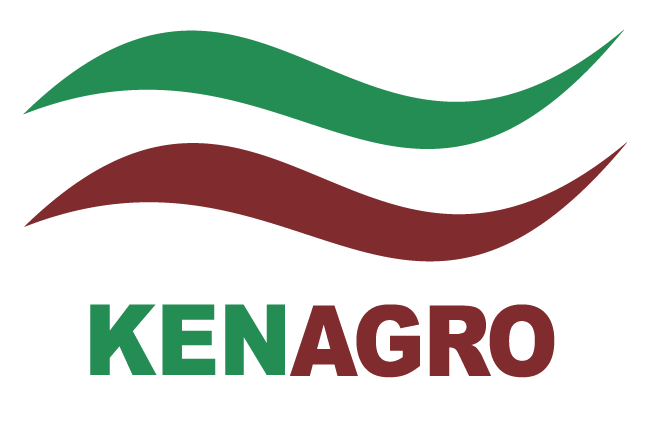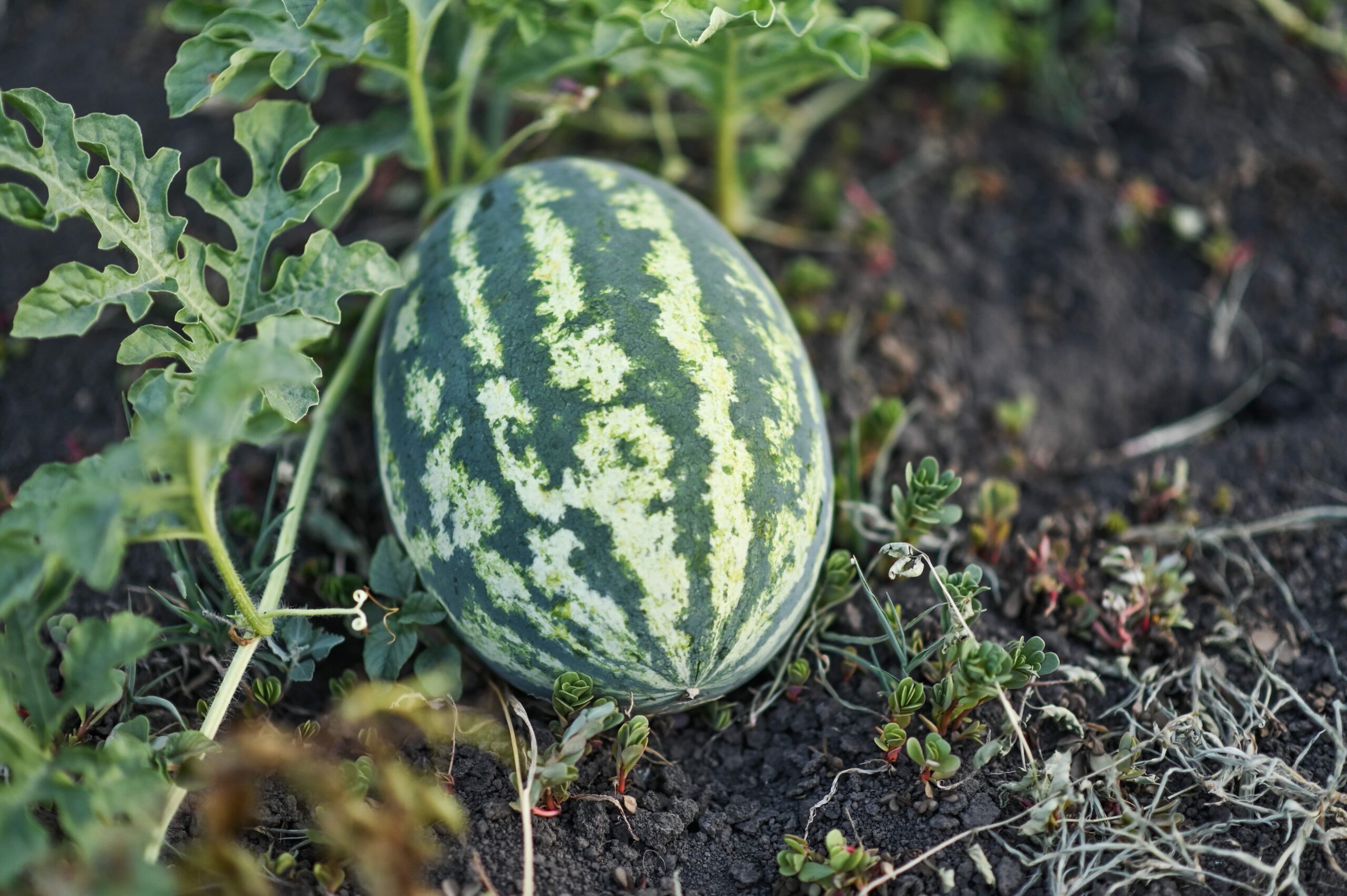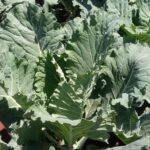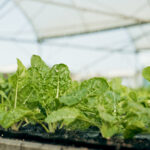Watermelon farming in Kenya is becoming a profitable agribusiness. This is due to growing demand for fresh, juicy fruits in local markets, supermarkets, and urban eateries. Watermelons grow well in arid and semi-arid areas such as Makueni, Machakos, Kitui, Kajiado, and parts of Western Kenya. In addition, they are fast-maturing and provide high returns when managed properly.
This guide covers essential steps to help farmers achieve high yields and profitability in watermelon cultivation in Kenya.
1. Choosing the Right Watermelon Varieties for Farming in Kenya
Start by selecting high-quality, certified seeds based on your region’s climate, pest resistance, and market preference.
Popular Watermelon Varieties in Kenya:
- Sugar Baby – Small to medium fruits, early maturity, sweet taste
- Crimson Sweet – Large, oval fruits with deep red flesh and high yields
- Charleston Gray – Resistant to diseases, firm rind, good for transport
- Zebra F1 Hybrid – High-yielding, uniform fruits, tolerant to diseases
Planning Tips:
- Plant based on water availability (ideal before or during short rains)
- Consider irrigation for year-round production
- Understand your market (retailers, roadside vendors, fruit processors) before planting
2. Soil and Climate Requirements
Watermelon grows best in warm, sunny regions with well-drained soils.
Ideal Conditions for Watermelon Cultivation:
- Soil type: Sandy loam soils rich in organic matter
- Soil pH: 6.0–6.8
- Temperature: 22°C–32°C
- Rainfall: 400–600 mm (avoid heavy rains during flowering and fruiting)
In addition, ensure the site is free from waterlogging and receives plenty of sunlight to promote healthy growth and high yields.
3. Land Preparation and Planting Techniques
First, prepare your field 2–3 weeks before planting to ensure the soil is ready for watermelon seedlings. This helps improve soil structure and promotes strong root development.
Steps:
- Plough and harrow the land to achieve a fine tilth
- Make planting holes or raised beds depending on field conditions
- Mix soil with compost or well-rotted manure
- Direct-seed or transplant seedlings at 1.5 m x 0.9 m spacing
Plant at the beginning of rains or use drip irrigation for dry season farming.
4. Crop Management (Irrigation, Feeding The Crop, Weeding)
Irrigation:
First, water your watermelon plants regularly during early growth, flowering, and fruiting stages. Next, reduce watering as fruits mature to improve sweetness and prevent cracking.
Feeding the Crop
In addition, apply DAP or organic manure at planting. Later, top-dress with CAN or NPK (17:17:17 or 23:23:0) during the vining stage. Also, use foliar sprays to provide essential micronutrients for healthy growth.
Weeding:
Finally, weed regularly during the first month to reduce competition for nutrients and water. Furthermore, apply mulch to suppress weeds and retain soil moisture.
5. Pest and Disease Control in Watermelon Farming in Kenya
Common Pests in Watermelon Farming in Kenya
Watermelon crops in Kenya are often attacked by aphids, thrips, melon flies, and red spider mites. To reduce damage, inspect fields regularly and remove affected leaves or fruits.
- Aphids
- Thrips
- Melon flies
- Red spider mites
Common Diseases in Watermelon Farming in Kenya
Watermelon can also be affected by powdery mildew, fusarium wilt, anthracnose, and downy mildew. Therefore, plant disease-free seeds, practice crop rotation, and remove infected plants to prevent the spread.
- Powdery mildew
- Fusarium wilt
- Anthracnose
- Downy mildew
Control Measures:
In addition, use recommended pesticides and fungicides at the right time. This helps protect your crop and ensures high yields and quality fruits
- Use resistant varieties
- Rotate crops to reduce disease buildup
- Apply appropriate insecticides and fungicides as recommended
- Maintain field hygiene and good spacing for air circulation
6. Harvesting and Post-Harvest Handling
Watermelons are usually ready to harvest 70–90 days after planting, depending on the variety. At this stage, check fruits for uniform color, a firm rind, and a creamy yellow underside to ensure they are mature and sweet.
Harvesting Signs:
- Fruit has a dull sound when tapped
- The underside (ground spot) turns yellow
- Tendrils near the stem dry up
Handling Tips:
- Use clean tools to cut stems
- Handle fruits carefully to avoid bruising
- Sort and grade by size and ripeness
- Transport in cushioned crates or sacks to prevent damage
7. Marketing and Value Addition for Watermelon Farming in Kenya
Watermelons have high local demand, especially during hot seasons. To take advantage of this, farmers can sell to fruit vendors, supermarkets, schools, and institutions. In addition, explore contracts with juice processors, hotels, and restaurants for steady sales. Furthermore, targeting festive seasons and dry months can help you get higher prices.
Value Addition Opportunities:
- Fresh-cut and packaged watermelon slices for urban consumers
- Watermelon juice or smoothies for added income
- Dried watermelon snacks for extended shelf life and new markets
8. Farm Business and Record Keeping
Treat your watermelon farm as a business to ensure long-term success. First, record all inputs, labour, yields, and sales to monitor farm performance. Next, track pest and disease treatments to maintain healthy crops. In addition, regularly evaluate profitability and identify areas for improvement. Finally, explore agricultural loans, insurance, and digital farming tools to reduce risks and improve efficiency.




